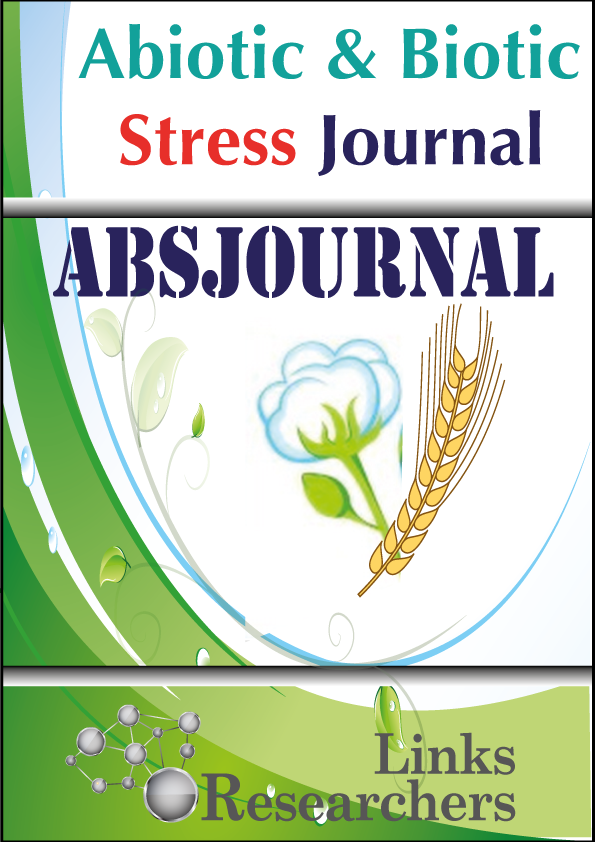Mudasir Irfan Dar*, Fareed Ahmad Khan and Farha Rehman
E-mail | irfanmudasir@gmail.com
Tahir Khan, Raziuddin, Fakharuddin* and Muazam Jamal Razi
Ibni Amin Khalil* and Raziuddin
Sitansu Pan, Surojit Khalko and Amrita Das
Bashir Ahmad1*, Ahmad-Ur-Rahman Saljoqi1, Hayad Zada2, Shahid Sattar1, Toheed Iqbal3, Saddam Hussain1 and Muhammad Saeed4
Israr Ali*, Naushad Ali*, Riffat Tahira**, Sardar Ali*, Izhar Hussain* and Sher Aslam Khan*
Feroza Haider1,2, Shamim Gul2,3*, Javaid Hussain4, Sadaf Asalam Ghori5, Muhammad Naeem Shahwani6, Muhammad Murad6 and Abdul Manan Kakar7
Malik Muhammad Yousaf1*, Muhammad Zeshan1,2, Mumtaz Hussain1, Muhammad Mohsin Raza1, Muhammad Jahangir Shah1, Bashir Ahmed1 and Sabir Hussain Shah3
Abdur Rehman1* and Shad Khan Khalil2
Muhammad Zafar*1, Muhammad Khalil Ahmad Khan2, Asmatullah3
Muhammad Salman Wazir and Mohammad Akmal
Rizwan Ullah Shah* and Iqbal Munir
Hala Rajab1, Muhammad Sayyar Khan1*, Safdar Hussain Shah1 and Syed Mehar Ali Shah2
Muhammad Qaisar Nawaz*, Khalil Ahmed, Ghulam Qadir, Muhammad Rizwan, Muhammad Faisal Nawaz and Muhammad Sarfraz
Fazli Ahad1, Raziuddin1, Nazir Ahmad1,2*, Muhammad Nauman1, Touheed Iqbal3, Nabeel Khan1, Fazli Hameed4 and Quaid Hussain2
Rahat Afza, Muhammad Asam Riaz*, Muhammad Afzal and Muhammad Zeeshan Majeed
Zafar Ahmad Handoo1*, Mihail Radu Kantor1 and Ekramullah Khan2
Saba Aleem1*, Iram Sharif2, Mehvish Tahir3, Muhammad Najeebullah3, Ali Nawaz1, Muhammad Imran Khan1, Amina Batool1 and Waheed Arshad1
Shaista Shafi* and Amjad Farooq
Hussan Ara Begum1, Muhammad Hamayun1, Noor Shad1, Waqar Khan3, Jawad Ahmad1, Muhammad Ezaz Hasan Khan2, David Aaron Jones2 and Kishwar Ali2*
Huma Qamar1, Mariam Hassan1, Muhammad Zubair1*, Adnan Arshad2, Muhammad Qusain Saeed3, Muhammad Umar3, Sundas Shahzad1, Tariq Mahmood1 and Muhammad Aftab1
Muhammad Nauman1, Iftikhar Ali3, Nazir Ahmad1,2*, Fazli Ahad1 and Touheed Iqbal4
Amir Muhammad Khan1, Laila Fayyaz2*, Raziuddin2, Sajid Ali1, Israr-ud-Din1, Sheraz Ahmad2, Haidar Ali1 and Ijaz Ahmad2
Tajnees Pirzada1*, Weenghar Ali Chandio1, Mansoor Ali Kalhoro2, Mir Munsif Ali Talpur1, Waheed Ali Mirbahar1, Abdul Ghafar Solangi1, Zulfiquar Ali Jumani1 and Rehana Kerio1
Noor Muhammad* and Shah Alam Khan
Doaa Khairy1, Mohamed Ali Osman2 and Fatma Abdel Mohsen Mostafa1*
Agha Mushtaque Ahmed1*, Fahad Nazir Khoso1, Ali Zachi Abdulqader Alhilfi2, Sohail Ahmed Otho1, Qurban Ali3, Din Muhammad Soomro1 and Zubair Ahmed Soomro1
Umair Faheem1*, Madiha Mobeen Khan2, Qurban Ali3, Muhammad Jamil4, Wajiha Anum2, Mashal Rehman2, Imran Akhtar2, Mussurrat Hussain1, Qaisar Abbas1, Ghayour Ahmad5 and Abrar Ahmad6
M. Israr1, F. Shahina2† and K. Nasira2
Amber Khalid1*, Amjad Rashid Kayani1, Muhammad Sajid Nadeem1, Muhammad Mushtaq1, Mirza Azhar Beg1 and Surrya Khanam2
Riaz Hussain1*, Ata-ul-Mohsin1, M. Farooq Nasir1, Zahid Akram2, Muhammad Sajid Qureshi1 and Abdul Mannan Hamzah1
Muhammad Ehsan Safdar1, Muhammad Asif1, Amjed Ali1, Ahsan Aziz1, Naeem Akhtar2, Muhammad Shahid Gulrez1 and Waqas Raza3*
Komal Javed1, Sohaib Muhammad1*, Zarghaam Khan1, Sehar Fatima1, Hassan Nawaz1, Mahrukh1, Tahira Khalid1 and Shariat Ullah2
Rashid Saraz1, Saiqa Amur1, Zia-ul-Hassan1*, Naheed Akhter Talpur1, Inayatullah Rajpar1, Muhammad Sohail Memon2, Muhammad Nawaz Kandhro3, Khalid Hussain Talpur1 and Nizamuddin Depar4
Fariha Qahar and Muhammad Sayyar Khan*
Riskayanti Riskayanti1, Hikmah Hikmah2*, Muhammad Irfan Said2, Nahariah Nahariah2
IRFANA IQBAL1*, PAKEEZA TANWEER1, FARKHANDA MANZOOR1, MUHAMMAD NAUMAN AFTAB2, AFSHAN KALEEM3, ROHEENA ABDULLAH3, ASMA ZAFAR4 & MEHWISH IQTEDAR3
ASMA WAHEED QURESHI1* & SHUMAILA ALAM2
MUJIBUR RAHMAN1, MUHAMMAD AYAZ KHAN1*, WISAL SHAH1 & ALIA NAZ1
ZEESHAN REHMAN1, RANA ABRAR HUSSAIN1, SHAISTA JABEEN2, SAKHAWAT ALI2, ZAHAR NOREEN1 & IRUM MUKHTAR1*
*AMNA SHOAIB, AROOJ SHEZAD, ARSHAD JAVAID, SUNDUS AKHTAR & ZOIA ARSHAD AWAN












